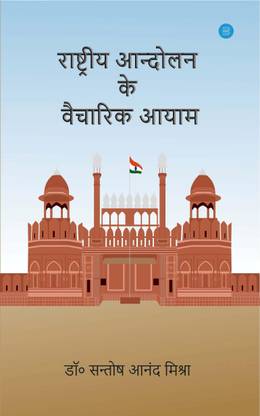(D) ANSWER THE FOLLOWING QUESTIONS IN BRIEF-
QUESTION 1. Who framed the constitution of India and how?
ANSWER- A constituent Assembly was framed with indirectly elected members of the provisional legislative assembly elected Dr.Rajendra Prasad as a permanent Chairman. The constituent assembly set up 13 Committees for framing the constitution. Dr, B.R. Ambedkar appointed as chairman of Drafting Committee.
QUESTION 2. Describe India's economic progress by highlighting the major achievement in this field.
ANSWER- India is the sixth economy of the world.
India is supposed to became fifth largest economy in the current year.
India has also achieved great heights in agriculture.
India is one of the major countries in export of the agricultural products.
India's food production doubles since 1950's.
QUESTION-3.Differentiate between National party and a Regional political party.Give one example of each.
National party-
1.A party that secures at least 6 percent of the total votes in Loksabha election or Assembly elections in four states and win at least 4 seats in the Loksabha is recognised as a National Party.
2.It is National level party.
3.Example- BJP, Congress
Regional political party-
1.A party that secures at least 6 percent of the total votes in an election to the legislative Assembly of a state and wins at least 2 seats in recognised as a state party/Regional party.
2.It is State/Regional level Party.
3.Example- RJD, LJP etc.
QUESTION-4. Explain any three challenges being faced by the Indian Society even now?
ANSWER- 1. Proverty- In our country many of people being poor.
2.iliteracy -Many of people of India donot know how to read and write.
3.Poor health- Many of people of India have poor health. poor health is a condition of inablility to perform physically, mentally or socially of what is required from a person.
QUESTION-5."Our democratic government has also protected the interest of the backward sections of the society" Justify the statement by giving three arguments.
ANSWER- 1. Citizens are involved in the progress of decisions making so that poor people can also voice their opinion and law makers can make rules accordingly.
2.There is an electoral system in place that helps to secure the interests of the backward section of the society.
3.Our democratic government give reservation for the people who belongs to backward section of the society.
(E) ANSWER THE FOLLOWING QUESTIONS-
QUESTION-1.State the main features of the Indian Independence Act 1947.
ANSWER-
1.The British rule over India would end with immediate effect.
2.An independent dominion of India was made including the United Provinces under the British like Madras Presidency, Carnatic, East Punjab, West Bengal, Assam etc.
3.West Punjab, North West Frontier Province, Sindh and East Bengal would go to Pakistan.
4.The Princely State were given the freedom to decide which dominion to join.
5.The dominion of India and Pakistan were granted complete freedom and they became members of British Commonwealth.
QUESTION-2-Describe the progress made by India in the field of Industry and agriculture.
ANSWER-
1.Our economic progress can be witnessed in expansion and diversification of production both in industry and agriculture.
2.The government has built the infrastructure like power, information technology, communication, transport etc.
3.Indian Government has also followed a policy of encouraging indigenous industries and given them a lot of assistance.
4.The agriculture sector mechanisation, irrigation,fertilisers and research have improved the scenario.
5.The progress and development can be witnessed in the Green Revolution, the White Revolution, Blue Revolution etc.
QUESTION-3-Mention any five basic feature of India's foreign policy.
ANSWER-Basic features of India's foreign policy as follows-
1.Belief in United Nations and Non Aligned movements.
2.Promotion of world peace.
3.Regional co-operation.
4.Friendly co-operations with Neighbours.
5.Anti colonialism and Anti Imperialism.
QUESTION-4-Highlight the main features of Dr.A.P.J. Abdul Kalam's India Vision 2020.
ANSWER-
It is the dream of all Indians that India should emerge as a vibrant and dynamic country and make great progress in all the field.
1.Better quality of education is required at all levels from basic literacy to hi-tech science and technology.
2.Raising of agricultural productivity and industrial quality.
3.Spurring growth of IT and Bio-Technology.
4.Improving health and nutrition.
QUESTION-5- Why did India opt for a democratic set-up ? In your opinion how far have we succeeded in this respect?
ANSWER-
1.The path that independent India had to follow was planned during the freedom was planned during the freedom struggle itself. It aimed at visiting the sovereign power in hands of the people.
2.So, India opted for a democratic set-up. It was necessary to have a system where every section of society would be represented.
3.Equality means equality of status and opportunity without any discrimination.
4.Every community religion and language would enjoy equality status.
In Indian democracy has been functioning successfully except for 2 years when emergency was imposed in 1975 by Prime Minister Indira Gandhi, After 1977 some politcal parties succeeded in contrulling the power for short spells.
0000000000000000000000000000000000000000000000000000000000000000000000000000000000000000000000000000000000000000000000000000000000000000000000000000000000000000000000










0 Comments
Thank you